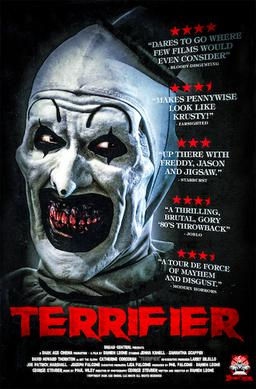The Seventh Victim (1943) review
- Jeremy Kelly
- Oct 4, 2021
- 4 min read
4. The Seventh Victim (1943)
Directed by: Mark Robson
Produced by: Val Lewton
Screenplay by: DeWitt Bodeen, Charles O’Neal
Starring: Tom Conway, Jean Brooks, Isabel Jewell, Kim Hunter

“The Seventh Victim” is another underrated chiller produced during a small window of the 1940s by RKO horror head Val Lewton. It’s about a young woman named Mary (Kim Hunter) who learns while away at boarding school that her older sister Jacqueline (Jean Brooks)—a cosmetics owner who pays her tuition—has apparently gone missing. She returns home to New York City and discovers that Jacqueline sold her business and has rented a room above a restaurant without living in it, one that contains a noose hanging above a chair. Mary’s subsequent investigation leads her to encounter people who know Jacqueline, like her husband Gregory (Hugh Beaumont), her friend and former employee Frances (Isabel Jewell), and her psychiatrist Dr. Louis Judd (Tom Conway). But there seems to be a strange conspiracy surrounding Jacqueline’s whereabouts, one which attempts at secrecy lead to potentially deadly consequences for the two sisters.
I was impressed from the beginning by Mary, played with strength and conviction by Kim Hunter in her first role; she went on to win an Oscar for her performance as Stella in “A Streetcar Named Desire,” and later played Dr. Zira in the “Planet of the Apes” franchise. Her Mary is sort of this wallflower who has to learn about the cold reality of the outside world, which is an interesting dynamic; but the downside is that the longer the story goes, the less she really has to do. It becomes more about the people she meets and how they influence her; she still takes part in some really good scenes, like one in the shower that you could argue influenced a certain moment in “Psycho,” and portrays genuine fear while poking around a dark building with Private Detective Irving August (Lou Lubin).

As for Jacqueline, while I like how much they build up her appearance, like she’s this enigma that everyone wants to unravel, I wish they would’ve gone even further with the mystery. The performance by Jean Brooks is good, and makes you feel the character’s tragedy, but it’s a little too quick and polished to have that disturbing impact it was going for. Unfortunately, Brooks—while portraying a woman with depression—was going through her own personal demons around the same time, divorcing her husband Richard and suffering from alcoholism that forced her retirement before the end of the decade. The remainder of the cast does fine work, especially Isabel Jewell as Frances and Tom Conway—George Sanders’s older brother—as Judd. Now if Judd seems at all familiar to you, there’s a reason; it’s the same character Conway previously played in “Cat People,” the first film Lewton ever produced. And I don’t mean he gives a similar performance; this is literally the same character, based on his mannerisms and that there are even subtle references. So you could almost call this a sequel or spin-off, especially since both films deal with slightly equivalent themes…of course, there is the fact that Judd dies in that movie, but let’s not focus on that; I would say that it feels like more of a sequel than “The Curse of the Cat People,” but that’s another story.
Visually, the film has all the traits of a classic film noir; the camera angles and use of shadows are pretty harrowing at times, and Jacqueline herself looks striking. There’s also a great repeat of the “Lewton Bus” trick originated in “Cat People,” where Jacqueline is walking home, and fears she’s being followed; it’s not quite as suspenseful, but still executed pretty well. This movie has much of its aesthetics going for it, but the story itself has some sloppy execution. Without revealing what Jacqueline’s disappearance builds up to, there’s a poor sense of stakes and consequences; aside from some moments with Mary, the tone just lacks urgency in favor of a more psychological analysis, which could have been effective, but the events don’t support it. There are some plot threads that feel unnecessary, like this poet named Jason (Erford Gage) that Mary has a romance with; he has very little to do with anything. Also, the ending just kind of peters out, as though some of the characters forgot what their purposes in the story even were. Now I have read that this movie was heavily cut in post-production, removing key scenes that would’ve added an extra layer of nuance and cleaned up some of the plot incoherence.

For all its faults, “The Seventh Victim” does a lot of things skillfully, particularly in its quiet tension and themes of isolation. It also contains one of the earliest indications of a homosexual relationship in a Hollywood film, even if it’s extremely downplayed. One of the co-writers, DeWitt Bodeen, is said to have been a gay man, so back when the subject was still taboo, this—along with “Cat People,” which he also wrote—could have been seen as a way of expressing it through women characters who feel like outcasts. The movie was not successful during its theatrical release, but is now commonly viewed as one of the better efforts of the ‘40s. Looking at it today, there are aspects that future powerhouse directors Alfred Hitchcock, Roman Polanski and Martin Scorsese clearly took inspiration from. I think it could’ve been better, but there is something appropriately dark and ahead-of-its-time about it, if a bit muddled.
My rating: 8/10





Comments